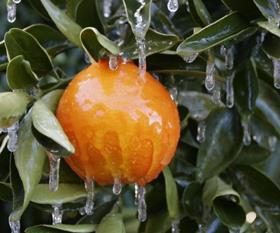
The South American citrus industry in Argentina and Chile is apparently evaluating the impact of frosts over the weekend.
According to a report by Argentinean publication La Gaceta, temperatures in Tucumán fell to -9oC at dawn on Saturday, affecting sugar cane and citrus production, especially the lemon crop.
The INTA Famaillá meteorological service said Saturday’s frost was the most severe in terms of duration and intensity.
It began on late on Friday night and lasted for nine-and-a-half hours with a minimum temperature of -3.5oC, the report said.
INTA technician Juan Rubén Pedraza told La Gaceta that the damage caused by the frosts is accumulative, meaning that the longer crops were exposed to the extreme cold the greater the damage could be.
“We must wait for the results of evaluations but from experience with these type of phenomena one can expect severe damages,” Mr Pedraza explained.
“Towards the east of the region, the impact will be greater than in the central area.”
In neighbouring Chile, the Citrus Committee of Asoex (Chilean Fresh Fruit Exporters’ Association) is organising a workshop for growers and exporters following two consecutive seasons of frosts.
The aim is to present to suppliers the various options available on the market today to control the impact of sub-zero temperatures, the Committee said.
During the recent cold snap, temperatures have fallen to -4oC in some areas of Chile’s citrus-growing regions, including Metropolitana, O’Higgins and Valparaíso.
Growers of lemons and oranges, who registered temperatures of -1.5oC and -2.5oC on their groves, are currently evaluating the damage caused to their crops to avoid exporting any fruit which might have been affected.



